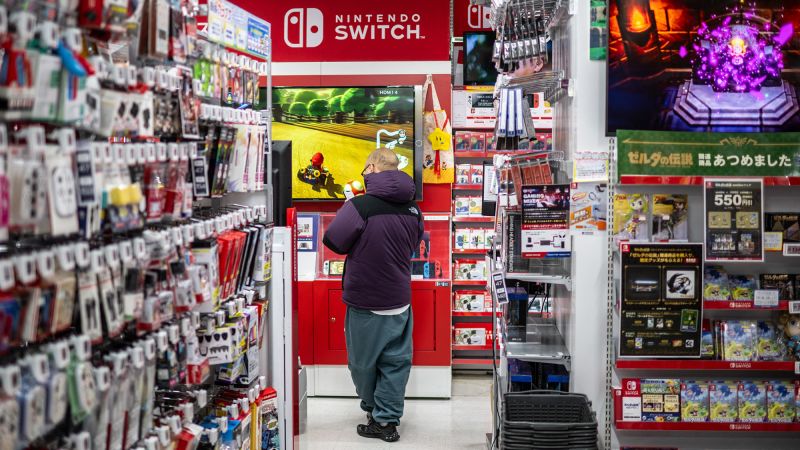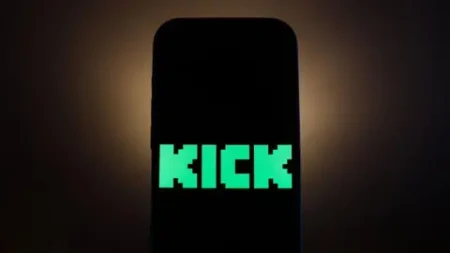Nintendo, the renowned video game company, recently made headlines by announcing the debut of the Switch 2, a highly anticipated successor to its successful gaming console that has captivated audiences since its launch over eight years ago. This announcement holds significant implications for Nintendo, as they endeavor to replicate the monumental success of the original Switch, a task that has proven challenging in the past.
On Wednesday, Nintendo shared specific details about the Switch 2’s features and hardware specifications for the first time. Although teasers were provided earlier in January, this marked the first comprehensive look at the upcoming console. Set to launch on June 5 at a price point of $449.99, the Switch 2 is notably more expensive than its predecessor, which initially retailed for $300.
The original Switch revolutionized console gaming by introducing the ability to seamlessly transition between playing on a television and a handheld device. Its innovative design sparked a trend among PC gaming brands to adopt similar hybrid capabilities. The introduction of the Switch 2 signifies not only a crucial moment in Nintendo’s product lineup, but also hints at potential trends that could shape the gaming industry for the next decade.
As Nintendo prepares for this monumental launch, they must contend with a landscape much more complex than that of 2017. The reality of tariffs on Chinese goods could influence production and shipping costs, and the rise of mobile gaming poses significant competition for traditional consoles. Additionally, the industry must manage expectations stemming from the pandemic-induced boom that characterized the gaming sector’s growth in 2020. Nintendo’s gamble is that fans will be willing to spend $450 for a console that appears to largely be an upgraded version of the original, rather than a groundbreaking reimagining of gaming.
Mat Piscatella, executive director for video game coverage at Circana, aptly remarked, “The Switch being so successful is a double-edged sword… A huge target to try to reach in terms of the same level of success.” This captures the challenge Nintendo faces: building upon a massive existing fan base while simultaneously meeting the high expectations that accompany it.
In terms of features, the Switch 2 incorporates an array of enhancements that aim to distinguish it from its predecessor. One such feature is Game Chat, which facilitates real-time communication between players. Moreover, the new console allows users to share games with fellow Switch owners even if they do not possess a copy themselves. The Joy-Con controllers, which are central to the Switch’s gameplay experience, now boast a mouse-like functionality, enhancing the players’ control over in-game movements. Additional hardware improvements include a larger 7.9-inch display, an impressive increase from the original model’s 6.2-inch screen, as well as improved storage capabilities and support for 4K resolution when docked.
Furthermore, Nintendo is embracing a blend of its beloved franchises and enticing non-Nintendo titles in its marketing strategy. The promise of new games from iconic series like Donkey Kong and Mario Kart juxtaposes with high-profile titles such as Elden Ring and Cyberpunk 2077. This strategic inclusion of third-party games is designed to attract new audiences, a significant undertaking for a brand historically recognized for its exclusive titles.
However, historical context also reveals Nintendo’s past challenges replicating success after a breakthrough launch. The Wii U is a prime example, garnering only 13 million sales compared to the 101 million units of the original Wii. Nintendo’s strategy this time involves directly branding the Switch 2 as a sequel rather than a divergent product line, a decision that signals a bold step for the company, as noted by Piscatella.
Although Nintendo’s history is filled with ups and downs, its robust catalog of characters and engaging gameplay may present an advantage in gauging consumer interest amid economic uncertainties. Market analysts believe that Nintendo’s storytelling approach and rich gameplay experiences can help differentiate it from mobile gaming competitors. The idea is akin to comparing fast food chains with premium dining experiences: while fast food may attract a larger demographic, the unique experience provided by a quality meal creates lasting loyalty amongst discerning customers.
In summary, the Nintendo Switch 2 promises to be a pivotal release for the company. The upcoming console will not only need to live up to the legacy of its predecessor but also navigate a transformed gaming landscape rife with both challenges and opportunities. Nintendo’s ability to adapt and innovate while maintaining its core value of memorable gameplay will ultimately determine the fate of the Switch 2 in a fiercely competitive market.










